No-Knead Focaccia
Published Apr 09, 2020•Updated Nov 07, 2025
This post may contain affiliate links. Please read our disclosure policy.
No-Knead Focaccia makes it easy to bake this classic Italian bread at home with no kneading or special equipment. A generous drizzle of olive oil over the dimpled crust and a topping of fresh rosemary and flaked sea salt give the bread its signature flavor.
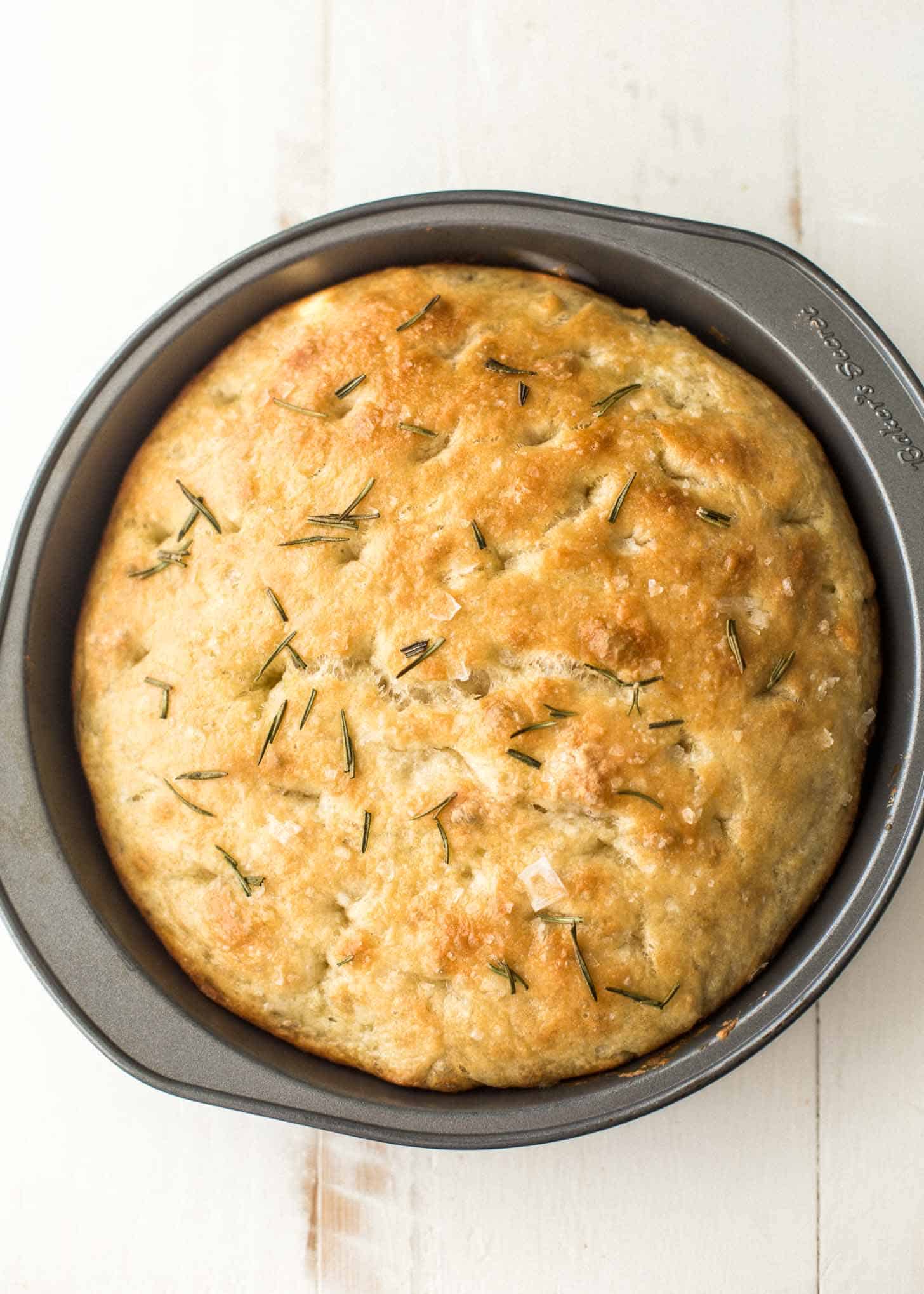
Long before the global health crisis and the realization that we would all be staying at home throughout the month of April, I had planned to share some of my family’s favorite recipes all month long. At our house, April is birthday month. My husband, Frank, myself, and our twin daughters all have birthdays in April. In fact, the twins and I have our birthdays on the same day! But whether we are able to celebrate birthdays this month in the way we originally planned or not, celebrate we will! And we will certainly be celebrating with all of our favorite foods. Starting with my favorite bread…Italian-style focaccia.

My mom is a focaccia master. She has been making this olive oil-rich bread for as long as I can remember and can do it with her eyes closed. Hers is a beautifully light, golden, tender bread that we devour right after it is baked and use for the best sandwiches the following day. I can never make her recipe as well as she can (of course), so I request it from her frequently, and keep this no-knead version in my back pocket when a craving strikes. 😊
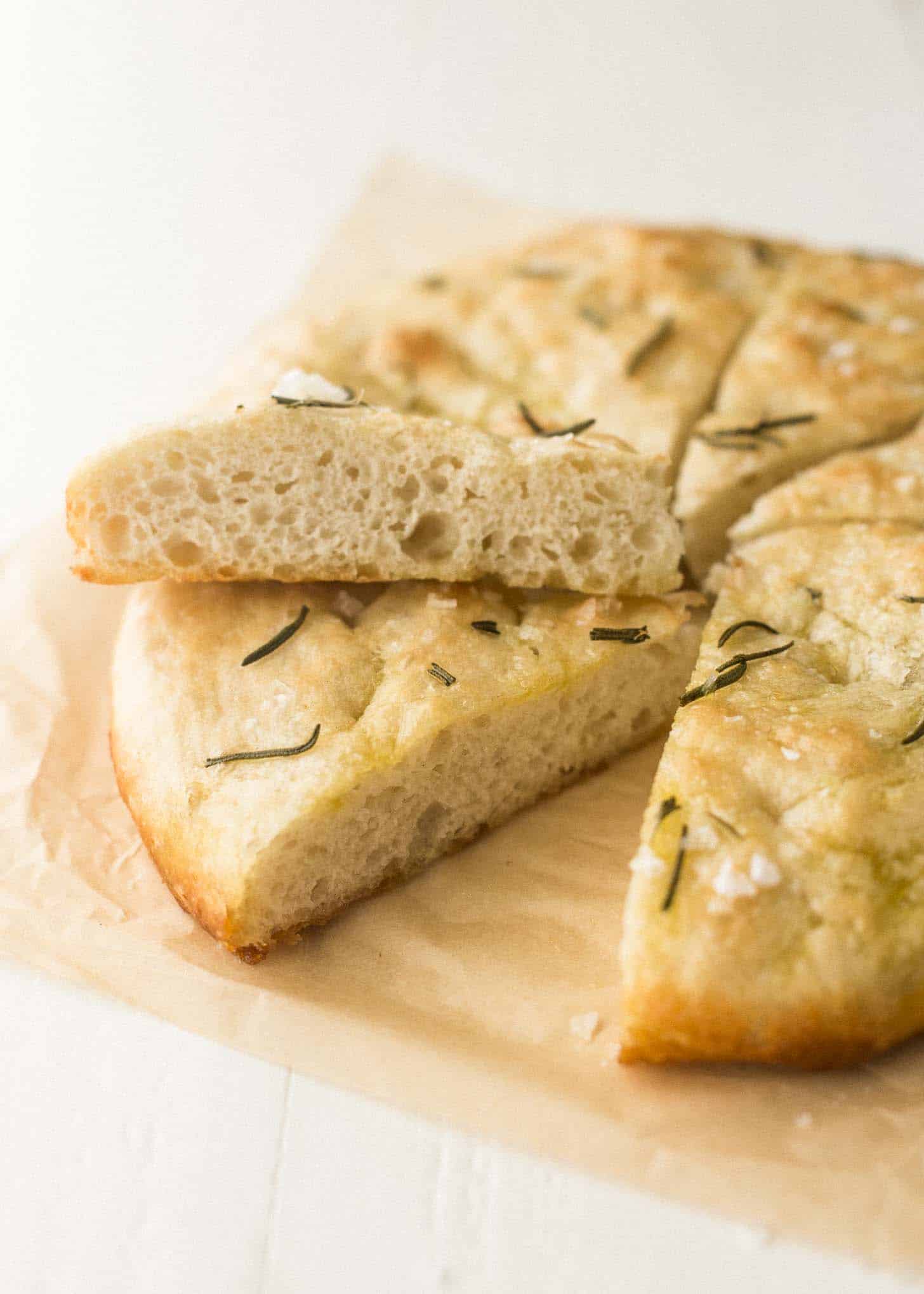
This year, Frank has promised to make this no-knead focaccia for my birthday since we’ll just be at home with our immediate family. I’m already excited for it (and the sandwiches that will follow).
Here’s how to make a batch of this beautiful Italian bread for yourself. It all starts with the basic recipe for No-Knead Everyday Bread.
Pin this now to save it for later
Pin It NowIngredients for Focaccia
- All-Purpose Flour – No special flour needed here – just regular all-purpose. Any brand is fine.
- Kosher Salt – This recipe was tested with Kosher salt (Morton’s or Diamond Brand), so use that for the right balance of saltiness. (If using table salt, reduce the amount you use by about half.)
- Sugar – Use regular granulated / white sugar. Don’t skip this – the dough needs sugar in order to rise.
- Fast-Acting or “Instant” Yeast – No-Knead Focaccia uses a dough that rises quickly (making it a go-to for new bread bakers or those of us who want this ready fast) and requires Fast-Acting (not “Active Dry”) yeast. See the original post for No-Knead Everyday Bread for more details on this yeast.
- Warm Water – The water should feel warm, but not too hot to touch. Check the package on the yeast for the recommended temperature range. I usually heat tap water in the microwave for about 90 seconds until it reaches about 120°F / 49°C.
- Extra Virgin Olive Oil – Extra virgin olive oil is the key to an authentic focaccia. Use some on the pans so that the bread gets a golden crust on the bottom and add a generous amount to the top of the dough before baking it.
- Toppings – Fresh rosemary and flaked sea salt are classic focaccia toppings, but you can skip the rosemary and just use sea salt if you want to keep it simple. I like Maldon Salt the best here – its large flakes give the crust of the bread the tiniest crunch. My mom also used to add sliced kalamata olives, other fresh herbs, and even very thinly sliced tomatoes to the top of her focaccia.
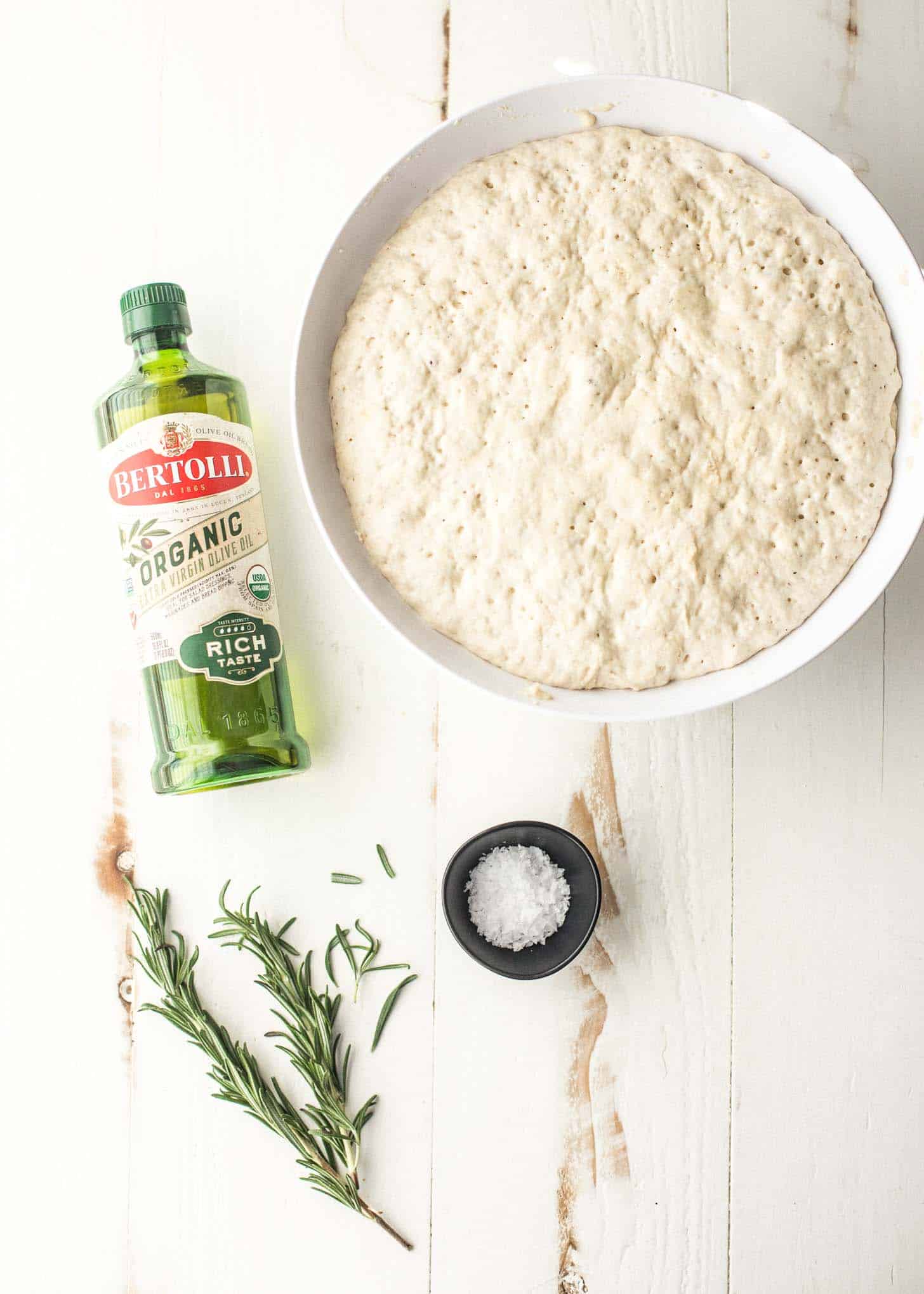
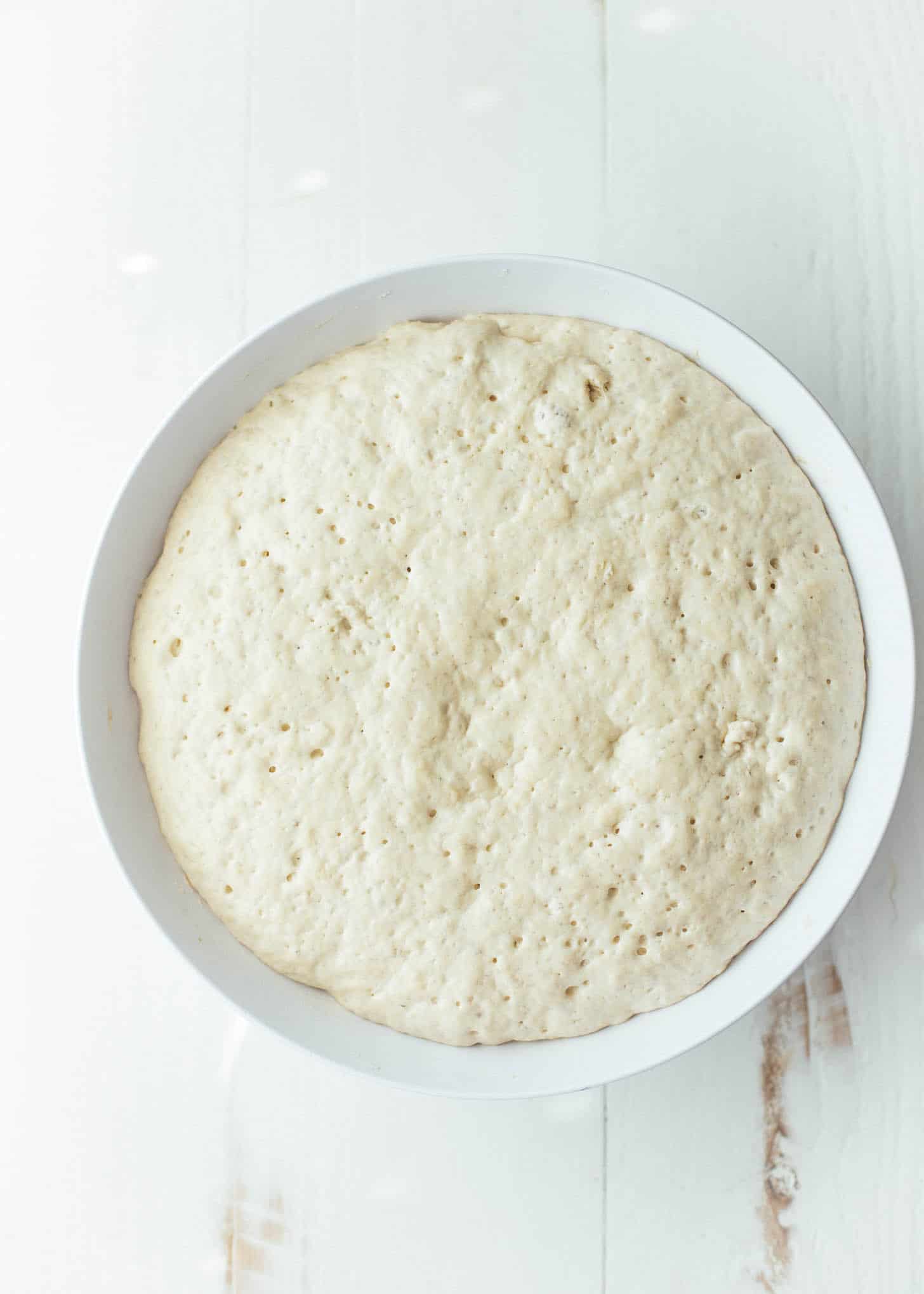

Tools for Focaccia
All you need to make homemade focaccia are a few tools you likely already have in your kitchen.
- Large Mixing Bowl – This is the bowl in which you’ll mix the dough and let it rise. Any large bowl is fine.
- Kitchen Scale – This is not necessary, but it’s easiest (and most accurate) to measure the flour by weight right into the mixing bowl.
- Pan of Choice for Baking – You can bake focaccia using any of these three options – cake pans, a sheet pan, a large baking dish. See below for more details.
- Parchment Paper – Parchment paper is key for this focaccia. It will make the bread very easy to remove from the pans – you’ll be glad you used it! (Note: Many brands of parchment paper have a recommended upper temperature limit, but there should be no issue with baking it above that temperature.)

Three Options for Baking Focaccia
You already have a pan in your kitchen that will work for baking focaccia. Here are three options:
- Two 8-inch Cake Pans – For perfectly even rounds of focaccia, divide the dough in half and bake it in two 8-inch cake pans.
- Sheet Pan – For a free-form focaccia, spread all of the dough out on a single sheet pan. You can form the focaccia into a single large round or a rectangular shape with this method.
- 9×13 Baker – Use a glass or ceramic baker to make one large, rectangular-shaped focaccia.
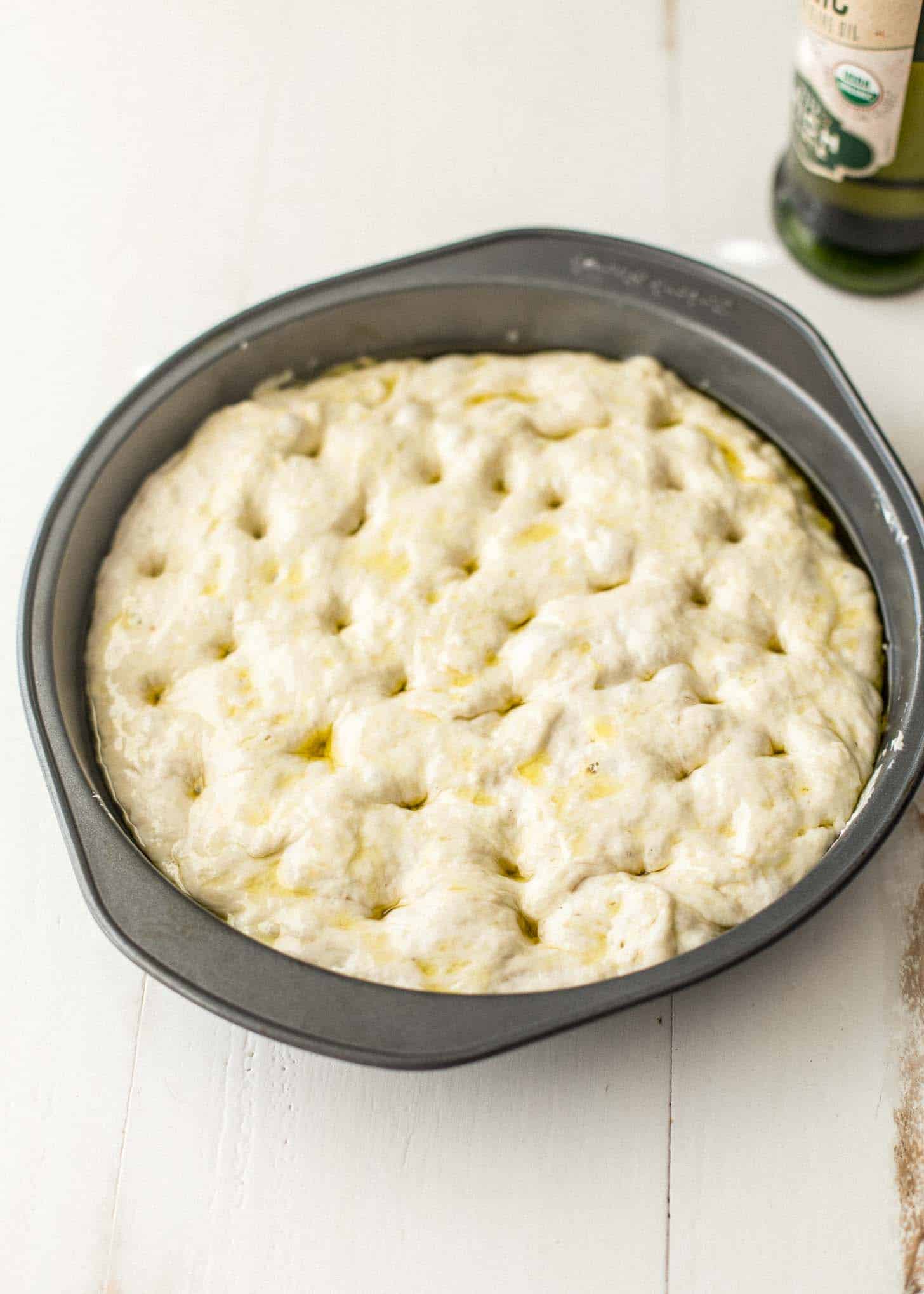
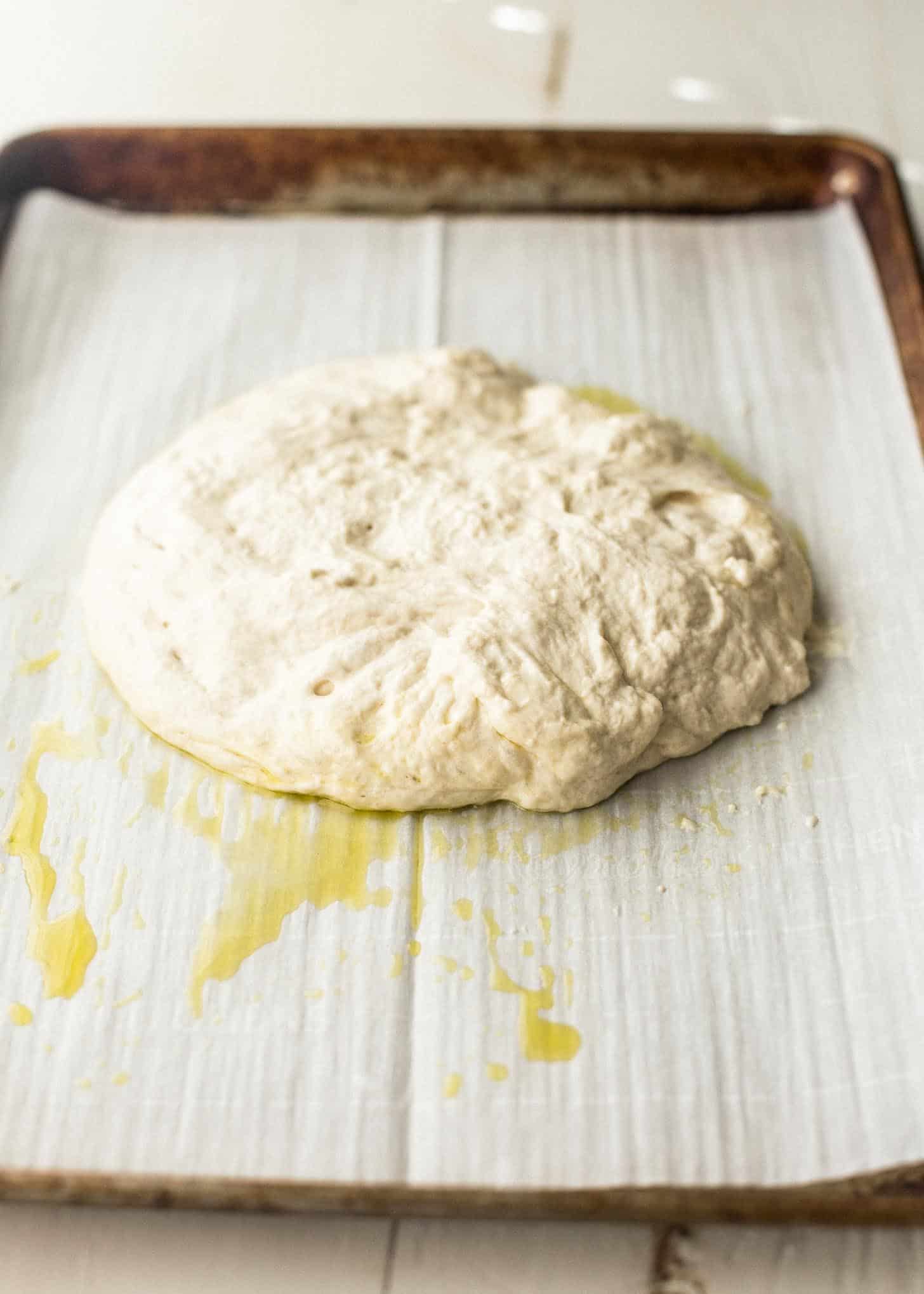
Aging Focaccia Dough
Much like pizza dough, focaccia dough gets better with time. While you can bake it right away, it’s also great if you let it age but storing it in the refrigerator for up to 5 days. This time helps the dough to develop flavor and gives it an even more pleasantly chewy texture that when baked right away.
To age the dough: After the first rise, transfer the dough to a bowl or plastic bag that has been rubbed with a generous amount of olive oil. Cover the dough (or seal the bag) and store it in the refrigerator for up to 5 days. When you’re ready to bake, let the dough come back to room temperature before continuing with the recipe as written.
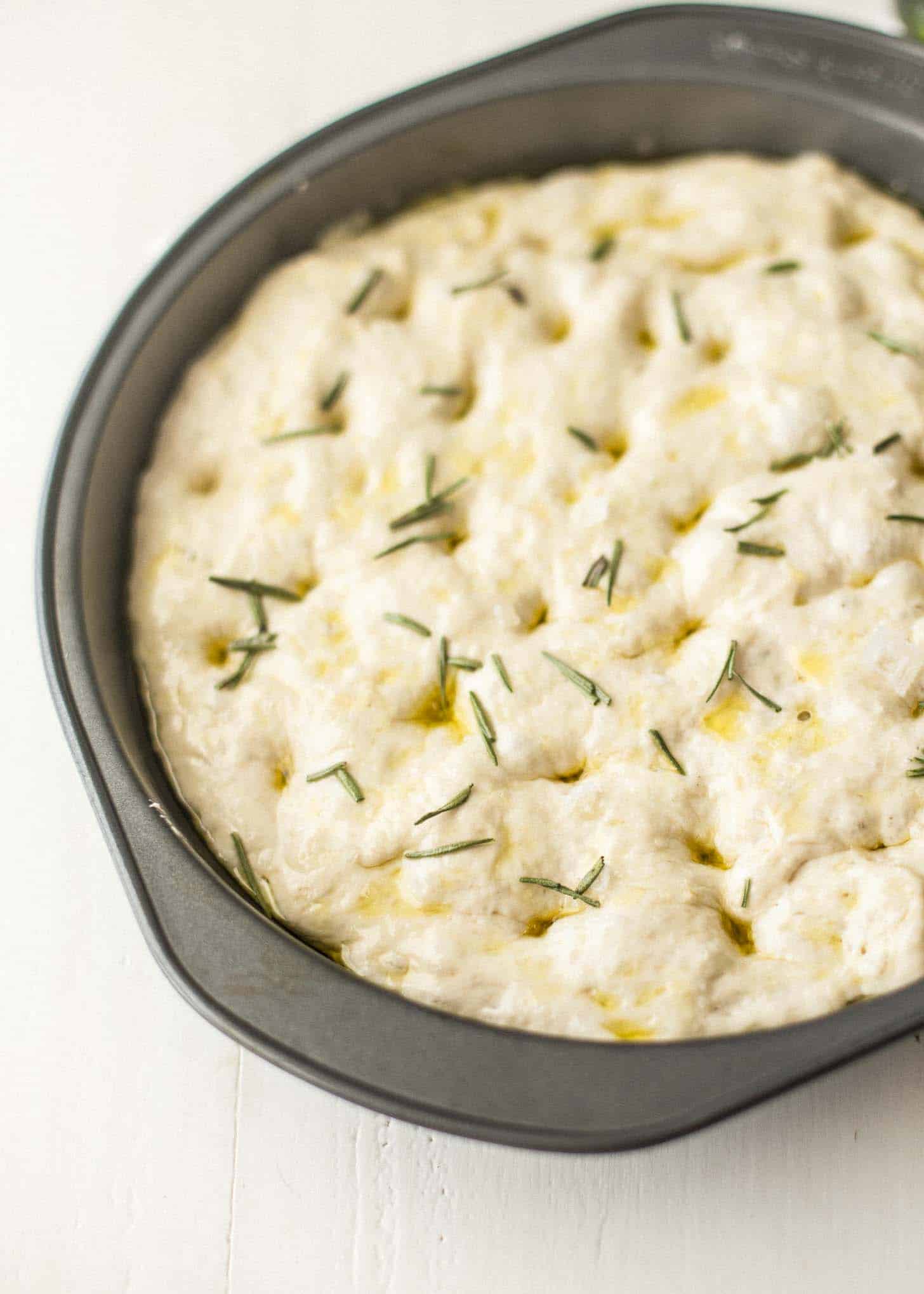
How to Freeze Focaccia
The best way to freeze focaccia is to bake it according to the recipe instructions and allow it to cool completely. Freeze the focaccia whole or slice it into wedges or squares (so you can reheat a slice or two at a time).
To serve the frozen focaccia, transfer it from the freezer to a sheet pan. Cover it loosely with foil. Bake it in a 350°F / 177°C oven until warmed all the way through and lightly toasted on the surface, 20 to 30 minutes.
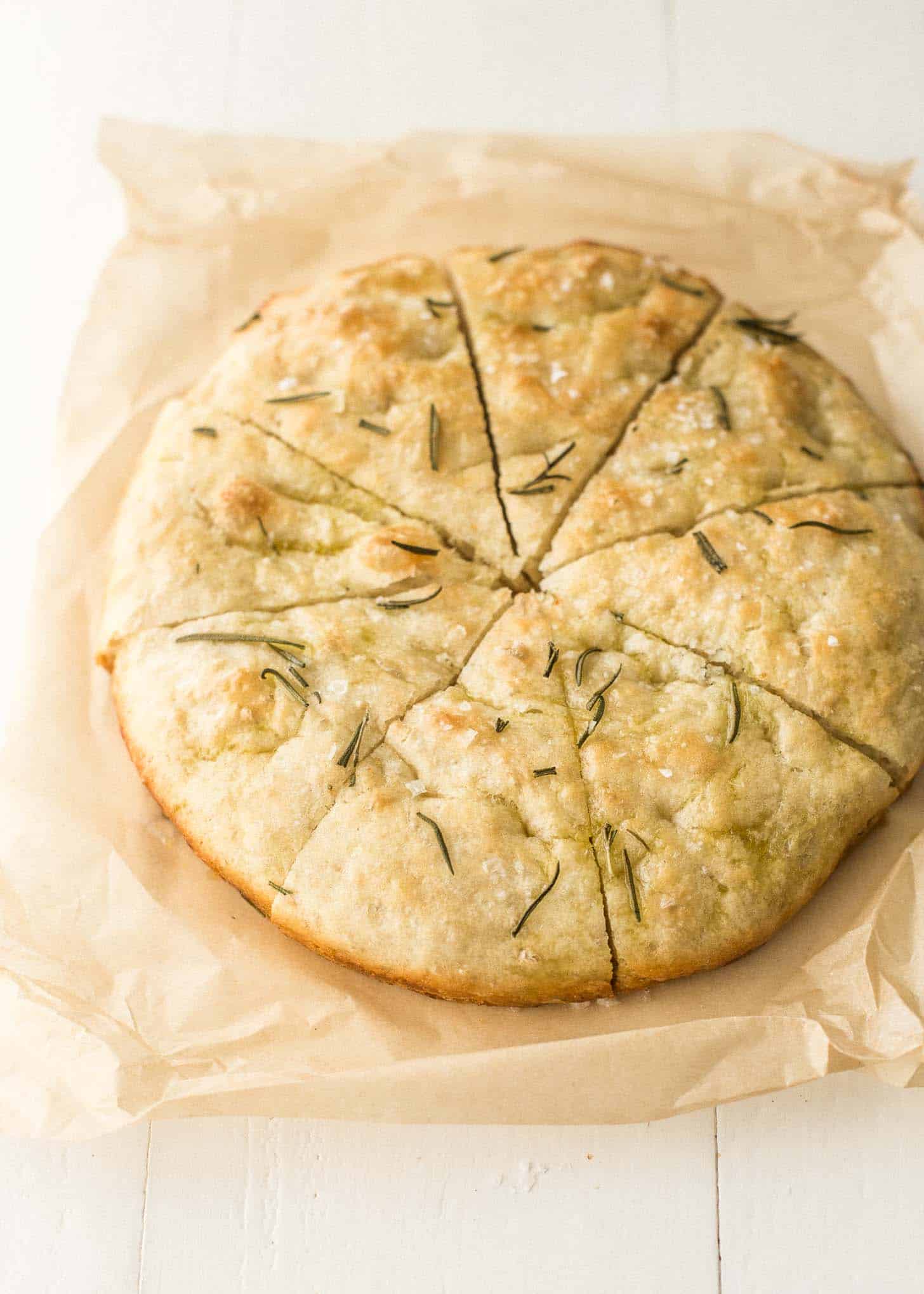
Italian-Inspired Recipes to Serve with Focaccia
- One-Pan Italian Turkey Meatballs with Marinara – One-Pan Italian Turkey Meatballs with Easy Marinara Sauce are seasoned with a blend of dried herbs and, using a few tips provided, come out tender and full of flavor. Once the meatballs have been formed, the dish comes together in a flash.
- Slow Cooker Puttanesca with Beef – Slow Cooker Puttanesca with Beef is an Italian-style tomato sauce loaded with savory ingredients like kalamata olives, capers, and tender shredded beef.
- Simple Beef Ragu {Slow Cooker, Instant Pot, Stovetop} – Few things beat the heartiness and versatility of a classic Italian meat and tomato sauce like this Simple Beef Ragu. This version includes instructions for the slow cooker, Instant Pot, or stovetop.
Pin this now to save it for later
Pin It Now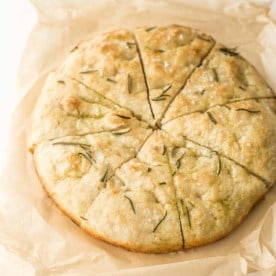
No-Knead Focaccia
Equipment
- Large Mixing Bowl
- 8-inch cake pans, sheet pan, or 9×13 baker
Ingredients
For Dough:
- 4 cups All-Purpose Flour (500 grams)
- 2 teaspoons Kosher Salt (I use Morton’s or Diamond Brand)
- 1 Tablespoon Sugar
- 2 1/4 teaspoons Fast Acting or “Instant” Yeast (see note)
- 2 cups Warm Water (473 milliliters) (see note)
For Finishing:
- 1/3 cup Extra Virgin Olive Oil, plus more for topping (78 milliliters)
- 2 sprigs Fresh Rosemary, roughly chopped (optional)
- Flaked Sea Salt (I like Maldon Salt), for topping
Instructions
- Make Dough: In a large mixing bowl, whisk together flour, salt, sugar, and yeast. Pour water over dry ingredients and stir until no dry spots remain. The dough will be very sticky, but just scrape down the sides as you stir.
- First Rise (60 minutes): Cover the dough with a clean dish towel and leave it on the kitchen counter to rise until doubled in size, 60 minutes. (If your kitchen is on the colder side, let the dough rise for 75 minutes.)
- Refrigerate Dough (Optional): If you’re making this dough ahead of time you can refrigerate it for up to 5 days. This will help it to develop flavor and a more traditional texture. To do this, pour a small amount of olive oil onto your hands and run your hands around the outside of the dough to gently deflate it. Cover dough tightly with plastic wrap (or seal the bag) and refrigerate it for up to 5 days. When ready to bake, set the dough out at room temperature until it has nearly doubled in size, 60 minutes.
- Prepare pans: When dough has finished the first rise, cut parchment paper out into rounds to fit inside two 8-inch cake pans. (Don't be tempted to skip the parchment paper – it really helps the focaccia to release easily from the pans after baking.) If you prefer a free-form focaccia, you can also line a large sheet pan or the bottom of a 9×13 baker with parchment paper.
- Drizzle about 2 Tablespoons of olive oil onto the pan.
- Transfer the dough to the prepared pan. (If dividing it between two cake pans, use a knife to draw a line down the center of the dough first so you can split it in two even halves.)
- Rub a small amount of olive oil into your hands and then flatten the dough, pressing it out towards the edges of the pan.
- Heat Oven: Preheat the oven to 450°F / 230°C.
- Second Rise (30 minutes): Place dough near the oven and let it rise, uncovered, for 30 minutes more.
- Just before baking, drizzle the surface of the focaccia generously with olive oil. Use lightly oiled fingers to make many deep dimples all over the surface of the dough, pressing down through the dough until you reach the bottom of the pan. (You want olive oil to pool in some of the holes you’ve created, so add more if needed.)
- Top the focaccia with rosemary and flaked sea salt.
- Bake bread (25 minutes): Bake bread until the top is light golden brown, 25 to 30 minutes. (Use an instant read thermometer if you have one. The bread is done when it reaches 190°F / 88°C in the center.)
- Let bread cool completely in the pan.
- Slice into wedges and serve.
Notes
Nutrition
Nutrition information is automatically calculated, so should only be used as an approximation.
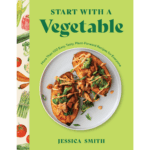
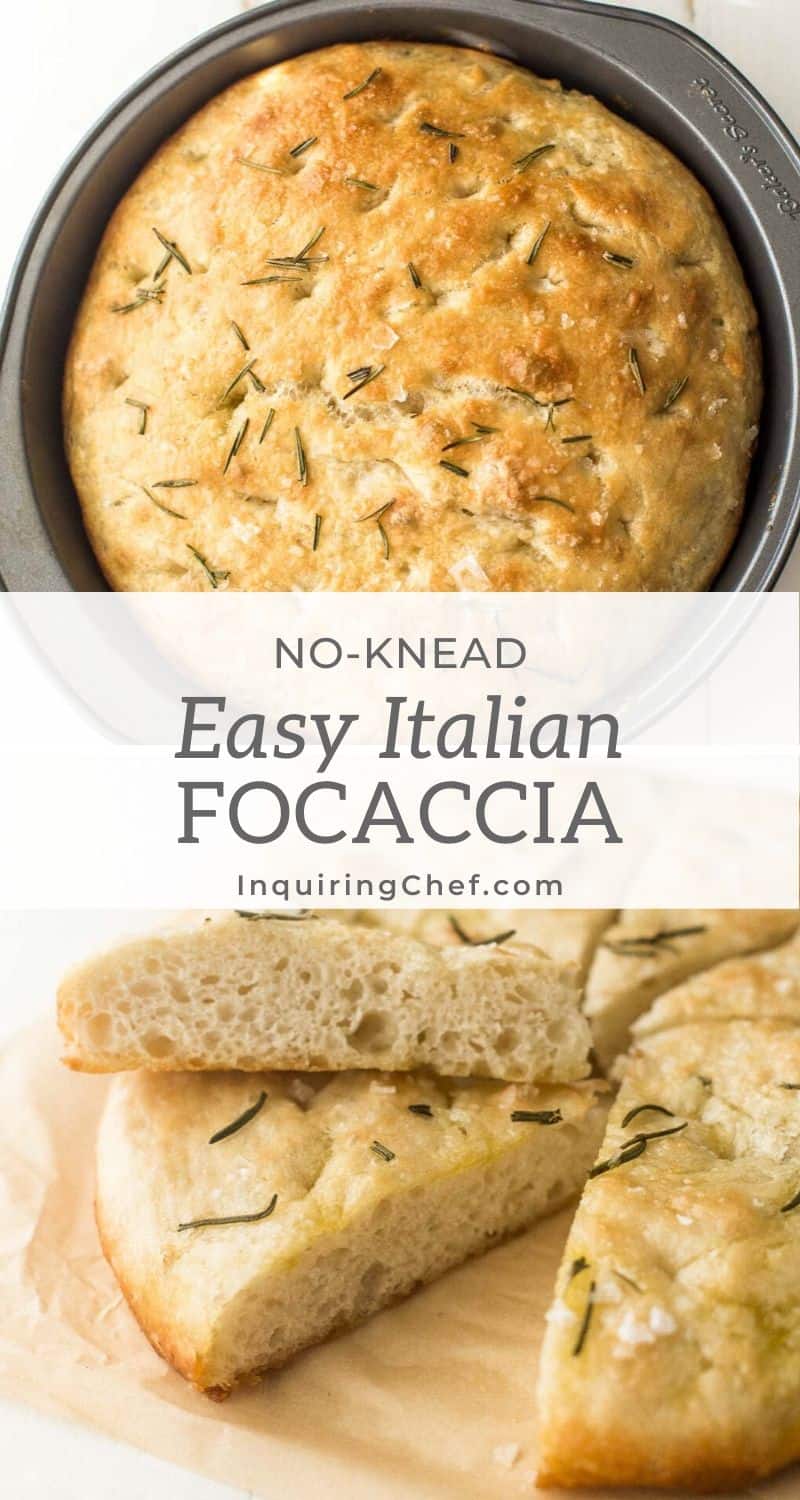

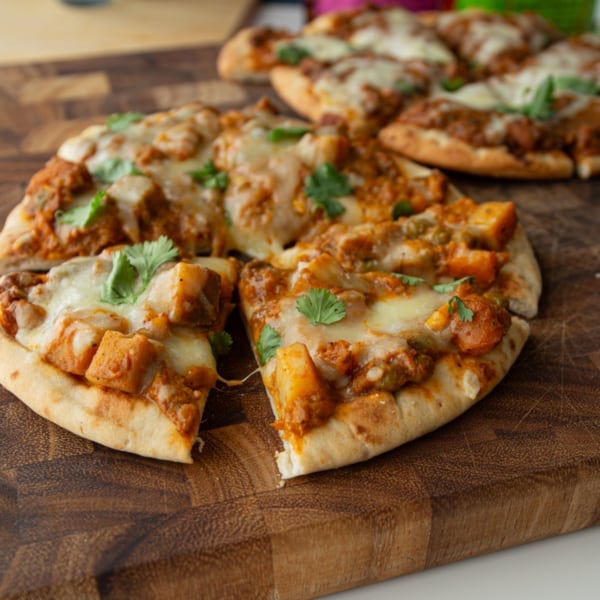
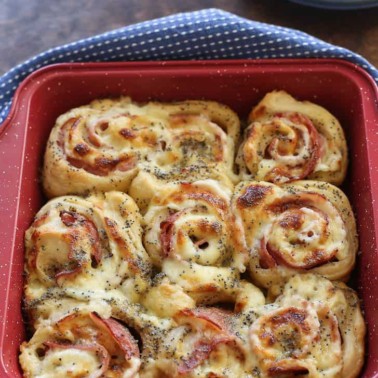









Really great recipe, excellent instructions and variations/options. One thing to note, the weight for the water and flour does not scale properly when doing 2x or 3x (in a text field, not the recipe measurement 🙂
Annie – so glad you enjoy it! Yes – thank you for pointing that out. I’ll go in and add a note about the scaling issues now. That’s definitely a limitation of the recipe card.
Simple, quick, and delicious. I will definitely make this again.